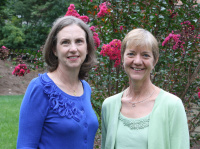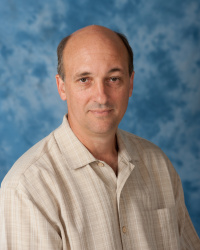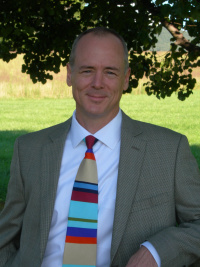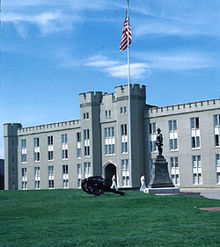
|
The Mathematical Association of America Maryland-District of Columbia-Virginia Section |
- Home
- History
- Main History Page
- Section History Document
- List of Past Officers
- Charter Members
- African-American Participation
- Stories from Section Members
- Section NExT Fellows
- Obituaries
- Smith Award Recipients
- Christensen Award Recipients
- Meritorious Service Award Recipients
- Undergraduate Award Winners
- Meeting Archive
- Past Meetings
- Talk Archive
- Old Section NExT Programs
- Newsletter Archive
- Meeting Minutes Archive
- Miscellaneous Documents
- Meetings
- Minutes
- Fall 2024 Executive
- Fall 2024 Membership
- Spring 2024 Executive
- Spring 2024 Membership
- Fall 2023 Executive
- Fall 2023 Membership
- Spring 2023 Executive
- Spring 2023 Membership
- Fall 2022 Executive
- Fall 2022 Membership
- Spring 2022 Executive
- Spring 2022 Membership
- Fall 2021 Executive
- Fall 2021 Membership
- Spring 2021 Executive
- Spring 2021 Membership
- Fall 2020 Executive
- Fall 2020 Membership
- Fall 2019 Executive
- Fall 2019 Membership
- Spring 2019 Executive
- Spring 2019 Membership
- Fall 2018 Executive
- Fall 2018 Membership
- Spring 2018 Executive
- Spring 2018 Membership
- Fall 2017 Executive
- Fall 2017 Membership
- Spring 2017 Executive
- Spring 2017 Membership
- Minutes Archive
- Newsletters
- Section NExT
- Awards
- Students
- Links
- Search
Fall 2012 Meeting at the Virginia Military Institute
The Friday afternoon workshop Creating Models to Explore Hyperbolic Geometry and evening banquet address Hyperbolic Crochet Coral Reef Comes to Southwest Virginia were presented by Caren Diefenderfer of Hollins University and Jan Minton from Roanoke College. The Saturday morning address Quantum Information: An Ongoing Research Program with Undergraduate Students was given by David Lyons from Lebanon Valley College and in the afternoon we had a split session. Randy Cone from the Virginia Military Institute presented A Forum on the Status of Mathematics Education: A Conversation in Solutions and Jeff Suzuki from Brooklyn College presented a Mini-Workshop: How to Win an Election Without really Trying. Invited Addresses
Jan MintonRoanoke CollegeCaren DiefenderferHollins UniversityWorkshop: Creating Models to Explore Hyperbolic Geometry Abstract: The workshop will provide some history of hyperbolic geometry and allow participants to explore two theoretical models of hyperbolic geometry (The Poincare Disk and the Open Half Plane) via Geogebra, an open source software. Bring your laptop. Participant will also create physical models of the hyperbolic plane and materials will be provided. Participants may choose whether they wish to knit, crochet or work with paper and scissors. No previous experience with knitting or crochet is necessary. We will ask those who do knit/crochet to help beginners. Banquet Address: Hyperbolic Crochet Coral Reef Comes to Southwest Virginia Abstract: Minton and Diefenderfer will discuss the chronology of the Roanoke Valley Reef and describe key ideas of hyperbolic geometry. The talk will highlight the multifaceted nature of the Coral Reef project and opportunities for collaboration with other academic disciplines and the wider Roanoke Valley community. Biographical Sketches: "Equations are just the boring part of mathematics. I attempt to see things in terms of geometry." -Stephen Hawking Jan Minton, Roanoke College, and Caren Diefenderfer, Hollins University, have been crocheting models of hyperbolic geometry as part of the Roanoke Valley Reef project. The Olin Art Gallery of Roanoke College will display this project, a satellite of the Hyperbolic Crochet Coral Reef of the Institute for Figuring (IFF) in 2013. Jan Minton is the coordinator of this community art project and Caren Diefenderfer is teaching "Discovering New Worlds," a first year seminar class on Hyperbolic Geometry and the Crochet Coral Reef. Cornell professor, Daina Taimina, was the first to realize that crochet models produce good tactile representations of hyperbolic surfaces. Margaret and Christine Wertheim, founders of the IFF, were inspired by Taimina’s work and decided that Taimina’s models looked like coral pieces. As a result, artists, environmentalists and crafters around the world have embraced these ideas and worked together to produce exhibits that highlight the important role of coral reefs. The most famous Crochet Coral Reef appeared at the Natural History Museum of the Smithsonian in 2010-2011. Jan Minton: Jan Minton received her BS from the University of North Carolina at Chapel Hill and her MS from Clemson University. She has been a member of the Roanoke College Mathematics Department for over 20 years. As Associate Director of the Roanoke College Honors Program she developed and taught Mathematics and the Arts, an exploration of the mathematical underpinnings of various art forms. She was excited to discover the Hyperbolic Crochet Coral Reef, a project of the Institute for Figuring that "resides equally in the realms of art, science, mathematics, and environmentalism". She has given several presentations and workshops to recruit participants for a satellite project. Caren Diefenderfer: Caren Diefenderfer received her AB from Dartmouth College and her MA and PhD from the University of California at Santa Barbara. She has been a member of the Hollins Mathematics Department for over 30 years. She has always enjoyed combining mathematics with music and/or fiber arts and has offered "Mathematical Knitting" and "The Music and Mathematics of Change Ringing" in the Hollins January short term. This fall she is teaching a first year seminar course titled "Exploring New Worlds: Hyperbolic Geometry and the Crochet Coral Reef Project." 
David W. LyonsLebanon Valley CollegeInvited Address: Quantum Information: An Ongoing Research Program with Undergraduate Students Abstract: This talk introduces the beautiful subject of quantum information that involves physics, mathematics, and computer science. We examine the intuition-defying topic of quantum entanglement---dubbed "spooky action at a distance" by Einstein---wherein physical systems, possibly separated by distances far enough to prevent interaction over short time spans, can nevertheless exhibit correlations and perform communication tasks not possible in classical models. We describe recent and ongoing joint student-faculty work in quantum information science conducted at Lebanon Valley College, with thoughts and observations about student research in particular. Biographical Sketch: David Lyons is a professor of mathematics at Lebanon Valley College. His current research is in quantum information science---an interdisciplinary area involving mathematics, physics, and computer science. Lyons’ teaching-related scholarship is driven by a longstanding interest in the use of geometry and visualization for teaching mathematical concepts. 
Randy ConeVirginia Military InstituteInvited Address: A Forum on the Status of Mathematics Education: A Conversation in Solutions Abstract: Several recent rankings, studies, and articles have indicated that STEM preparedness in the United States, at all educational levels, is on the decline. Do such findings indicate the actual state of affairs in mathematics education? Perhaps more salient and manageable questions are: are we satisfied with the current state of preparedness in mathematics within our current population of students? If not, what are some possible courses of action that may we take to meet these students at their level? The point of this forum is to begin a conversation, at the MD-DC-VA Section level, about specific solutions some institutions are developing in the face of a perceived lack of mathematical preparedness in their incoming students. First, to give the forum some context, some general information from recent studies on post-secondary mathematics education will be presented. Second, the forum moderator will give some detailed information about specific programs of action that are underway at his home institution; programs of action designed to meet student-preparedness challenges. Finally, the forum moderator will ask the session attendees to contribute their own solutions, encouraging them to speak about initiatives at their home institutions which are designed to meet the issues of student-preparedness. Biographical Sketch: Randall E. Cone is currently director of the new IBL-based Mathematics Education and Resource Center (MERC) at the Virginia Military Institute. He received his undergraduate education at Salisbury University in Maryland, his Ph.D. from Virginia Tech, and has enjoyed learning and teaching throughout his career (often occurring simultaneously). He continually looks to how best to engage his students and encourage them to become independent thinkers. Randy, as most know him, loves life and music; noting that they are usually, and approximately, the same thing. Jeff SuzukiBrooklyn CollegeInvited Address: Mini-Workshop: How to Win an Election Without really Trying Abstract: In 1812, a new word joined our political lexicon: the gerrymander, a bizarrely shaped district designed to give one political party an advantage in the next election. Since then, gerrymanders have been denigrated as "pathologies of democracy," and various schemes have been suggested to combat gerrymanders. But to date, identifying gerrymanders has barely gotten past the "I know it when I see it" stage. We'll take a look at the basic problem, and examine several different measures of bizarreness. The material can be incorporated in courses from remedial algebra, through probability and statistics, and on to undergraduate research. Biographical Sketch: As an undergraduate, Jeff Suzuki's interests included mathematics, science, and history; consequently his Ph.D. dissertation was on the history of a problem in mathematical physics. Since then, he has continued working in the history of mathematics, but his interests have expanded to include mathematics education and non-western mathematics, with a particular focus on bringing research into classroom mathematics at all levels. His most recent project is mathematics and social advocacy, which can be described as using mathematics to answer questions like "How large should a jury be and how should it render its decision?" (12 and by unanimous vote) or "Does the electoral college really give large states more political power?" (no, despite claims to the contrary). His recent publications include Mathematics in Historical Context (MAA Publications) and "A Mathematical Explanation for the Martyrdom Effect" (International Journal of Differential Equations and Applications). |
Copyright © 2013 - The Mathematical Association of America
Please send comments, suggestions, or corrections for this page to Brian Heinold at heinold@msmary.edu
Last Modified: 02/08/2013 - 04:28pm
 The Fall 2012 meeting of the section was held on October 26-27, 2012 at the
The Fall 2012 meeting of the section was held on October 26-27, 2012 at the